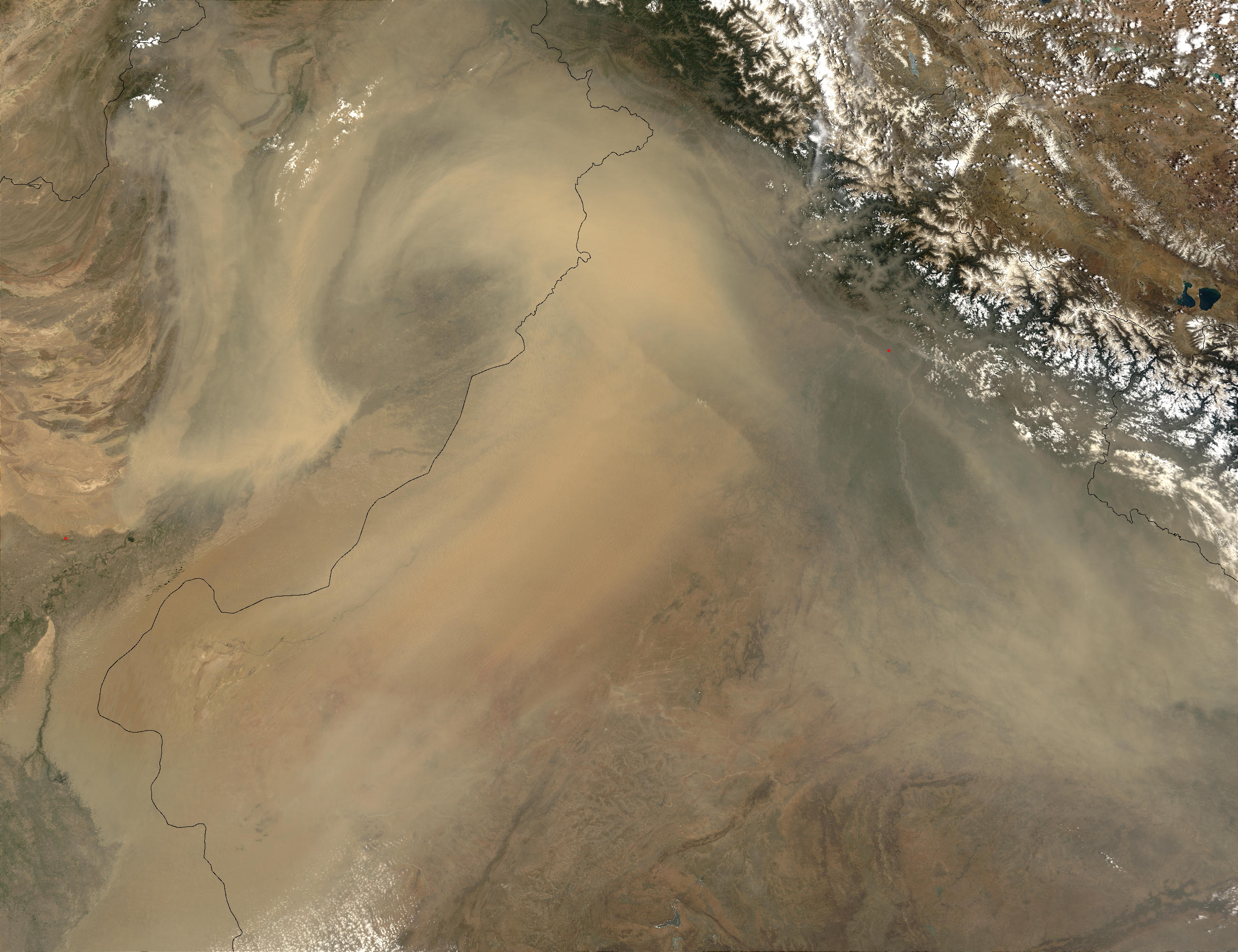In May 2018 last year, severe dust storms lashed across the Northern Indian region deteriorating the air quality of the country capital to a great extent. This dust storm in Delhi left the population in a threatened and heightened state of psychological trauma for days. The scientists and materialists were surprised to see that these intense winds could cause such a hike in the death tolls.
However, in spite of an increase in the death toll due to the high intensity of winds also causing damage to property and life at large, the long term effects to human health due to the region being engulfed in dust went up tenfolds. Recently, a team of researchers analyzed the adverse impact of dust storms that struck the capital region the previous year. The study noticed a stark increase in the levels of particulate matter which led them to urge for a warning system that would alarm people about the dust storm in Delhi prior to its actual happening.
The emergence of Dust Storms in the country:

The pre-monsoon season in the country, i.e from March to May features an occurrence of dust storms in the Indo-Gangetic Plains which stretch all over the northern Indin region. The loose sand and soil particles – Particualary from the Arabian Peninsula or the Thar Desert is usually brought to the Indo-Gangetic Plains by the Westerly winds. Dust storms are a regular feature in the Indo-Gangetic Plains but the May 2018 dust storm caused around 100 deaths while 200 people were injured. Home to around 900 million, these dust storms have had a bad effect on human health to the people living in the Indo-Gangetic plains.
What are the experts saying?
Ramesh P Singh, the Senior Author behind this study recently said that “We are concerned that the dust impacts the health of people who get exposed.” While rains that happen soo after clean up the dust improving the Air Quality, Dust Storm in Delhi is really hampering the overall environment to a great extent.
Chief research scientist at NASA’s Goddard Space Flight Center – Sudipta Sarkar said that their study “highlights and summarises the manifold hazardous effect of dust storms on northern and western India”. She claimed that immensely populated cities like Delhi and Kanpur which are a part of the Indo-Gangetic Plains are already vulnerable to the hazardous Air Quality in the month of October-November due to residue burning in the north. Effects of the dust storm in Delhi will be severe as it will be hampering the capital’s Air Quality during the March-May time frame – Which are usually the months that have moderate Air Quality.
How will the Dust Storm in Delhi worsen the Air Quality?
The team of researchers looked at the concentration of particulate matters which are of two types – i.e PM 2.5 and PM 10 (Learn more about Particulate Matter Pollution here). The study was conducted by first obtaining the data from the Central Pollution Control Board for stations located in Delhi, Jaipur, and Agra. It was noted that Delhi experienced the worst air quality where the PM 2.5 and PM 10 values were extremely high, especially during the second and third dust storms. The track of dust carried by these dust storms sometimes move and vanish above the Delhi atmosphere, but occasionally the track of dust that can seep into Delhi, making a climatic change.
Since Delhi is in the middle of the dust-laden winds that originate from Arabinan Penisula and the Thar Desert, these dust storms which occasionally go above Delhi can still have a great impact on it. Sarkar said that even though the first dust storm that hit the country capital was deadly, it did not majorly affect the air because Delhi had a significant southeasterly wind component that brings in relatively clear air from the are diluting the air a little.
Gufran Being, senior scientist at the Indian Institute of Tropical Meteorology in Pune, who is also associated with the study said that the particulate matter changes according to the nature of the dust storm. He said that “In most cases, coarser particles (PM10) increase significantly but in some cases, levels of both finer (PM2.5) and coarser particles enhance.”
Implementing an early warning system about Dust Storm in Delhi into place:

Dust storms have now become a regular occurring in Delhi every pre-monsoon season. The researchers who have studied it for a long time have suggested that a warning system needs to be implemented when the dust storm hits Delhi. This system will warn people to stay indoors when the most harmful phases of the storm overtake the country capital.
The authors of the study have also stated the need to Air Quality monitoring stations which can alert about the same using a website. AQI India has been doing a similar task by providing P.M 2.5 and 10 values which are both available on the website dashboard and mobile app that can check the bad effects of the dust storm to the citizen of Delhi.